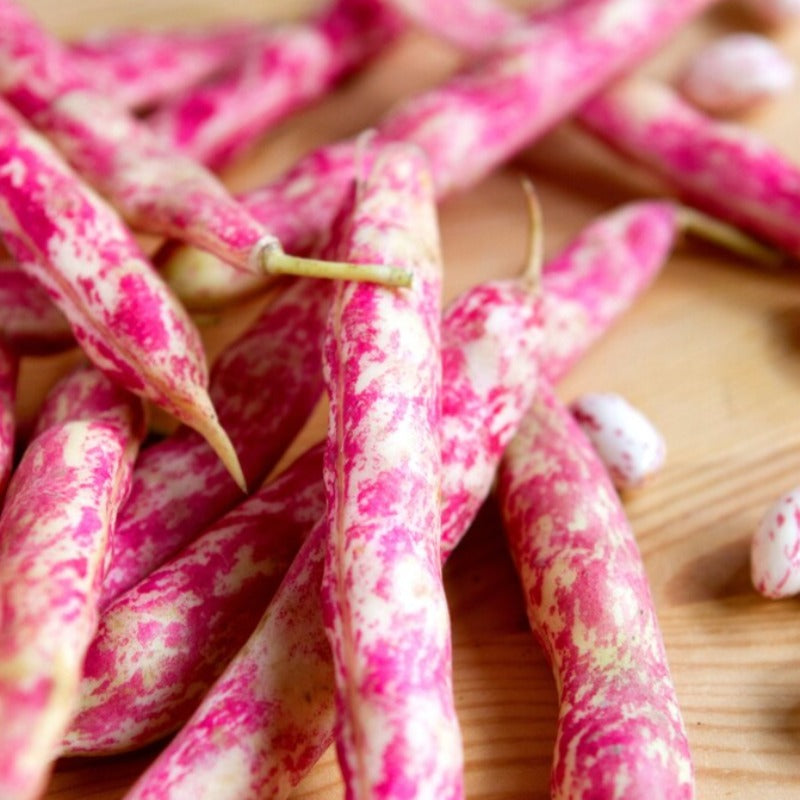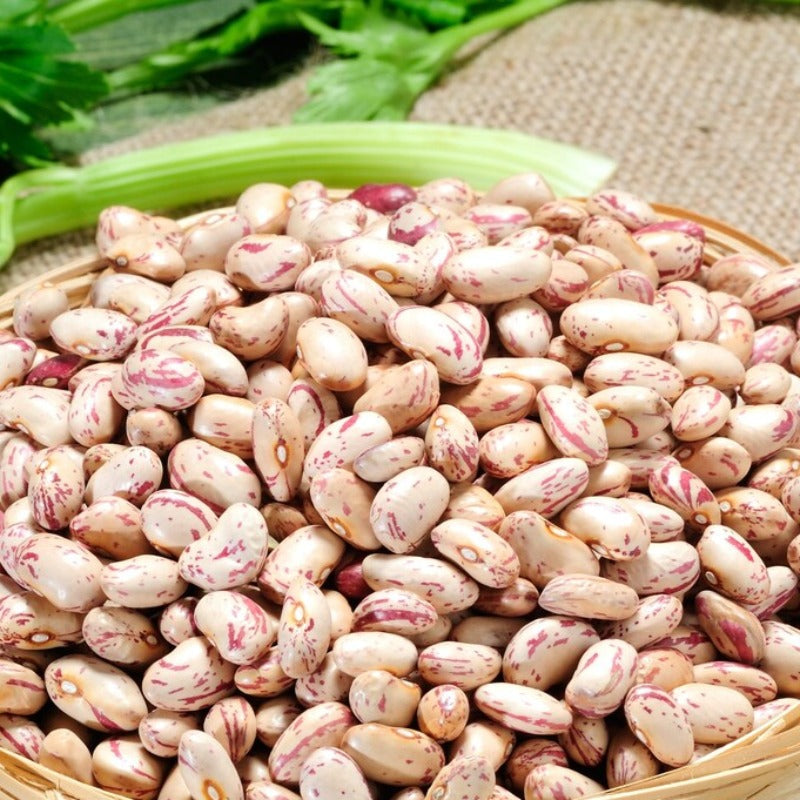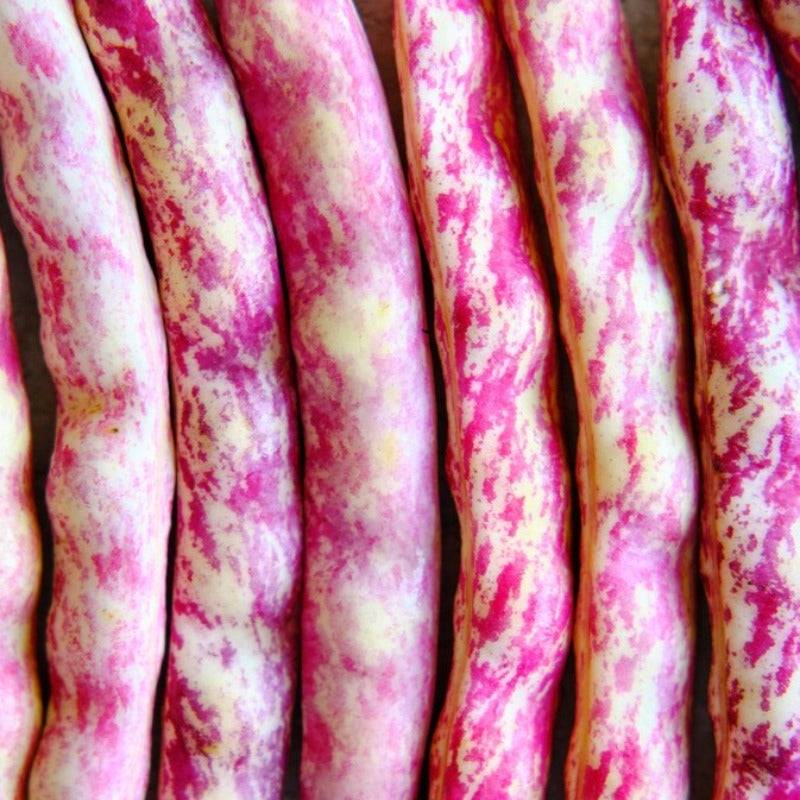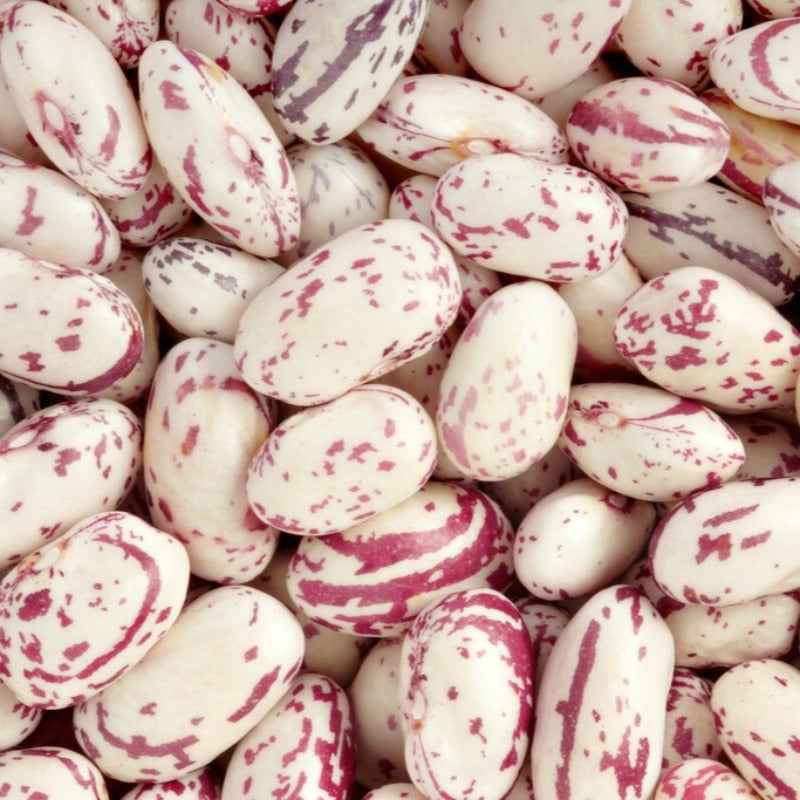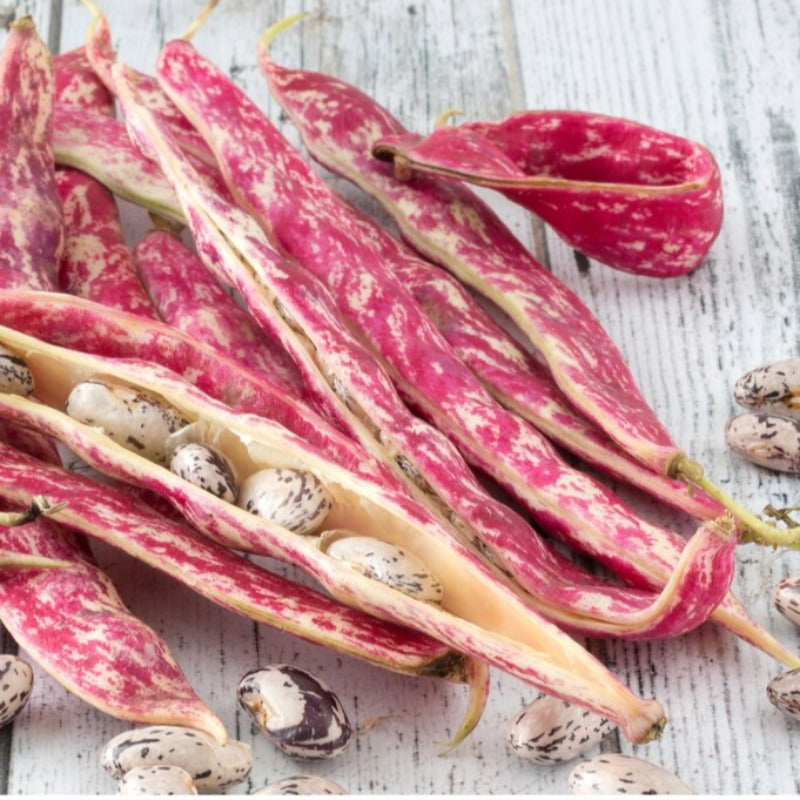- Historical context: The Cranberry Bush Shelling Bean, also known as Borlotti or Roman beans, has been a staple in Italian and Portuguese cuisine for centuries. It is believed to have been introduced to Italy from the Americas in the 15th century.
- Geographical origination: Originally, these beans were cultivated in South America, particularly in Peru and Colombia.
- Relevant cultural significance: In Italian and Portuguese cultures, these beans are often used in soups, stews, and salads. They are also a key ingredient in the traditional Italian dish 'Pasta e Fagioli'.
- Time period of discovery: The beans were discovered and started being cultivated in South America around 2000 BC.
- Original habitat: The original habitat of these beans is the Andean region of South America.
- Notable historical uses: Historically, these beans were used as a protein source in the diets of many South American cultures.
- Ideal temperature range: The ideal temperature for growing Cranberry Bush Shelling Beans is between 60°F and 85°F.
- Soil type: These beans prefer well-drained, fertile soil with a pH between 6.0 and 7.0.
- Sunlight requirements: They require full sun exposure for optimal growth.
- Watering needs: Regular watering is necessary, but the soil should not be waterlogged. It's best to water deeply once a week.
- Planting season: The best time to plant these beans is in the spring, after the last frost.
- Germination time: The seeds typically germinate within 8 to 10 days.
- Growth cycle duration: The growth cycle of these beans is approximately 85 to 105 days.
- Common pests and diseases: Common pests include aphids, bean beetles, and spider mites. Diseases may include bacterial blight and bean rust.
- Companion planting advice: Good companion plants for these beans include corn, cucumbers, and potatoes.
- Common challenges and solutions: One common challenge is overwatering, which can lead to root rot. To avoid this, ensure the soil is well-drained.
- Nutritional values: Cranberry Bush Shelling Beans are rich in protein, fiber, and complex carbohydrates. They also contain essential minerals like iron, magnesium, and potassium.
- Health benefits: These beans can help regulate blood sugar levels, improve digestion, and support heart health.
- Culinary uses: They are commonly used in soups, stews, and salads. They can also be used in pasta dishes and casseroles.
- Medicinal uses: Traditionally, these beans have been used to aid digestion and support cardiovascular health.
- Other unique advantages: These beans are easy to grow and can be stored for long periods, making them a practical choice for home gardens.
